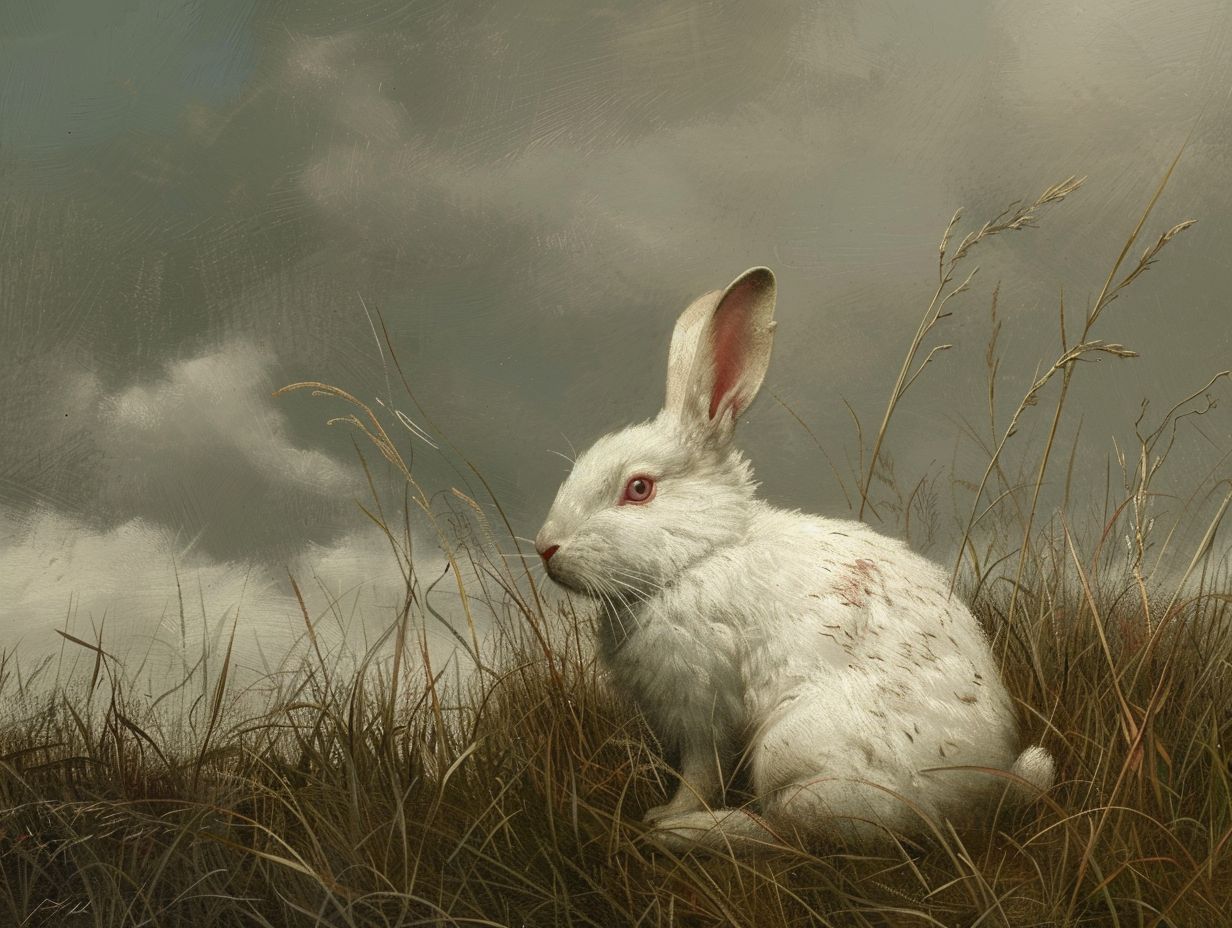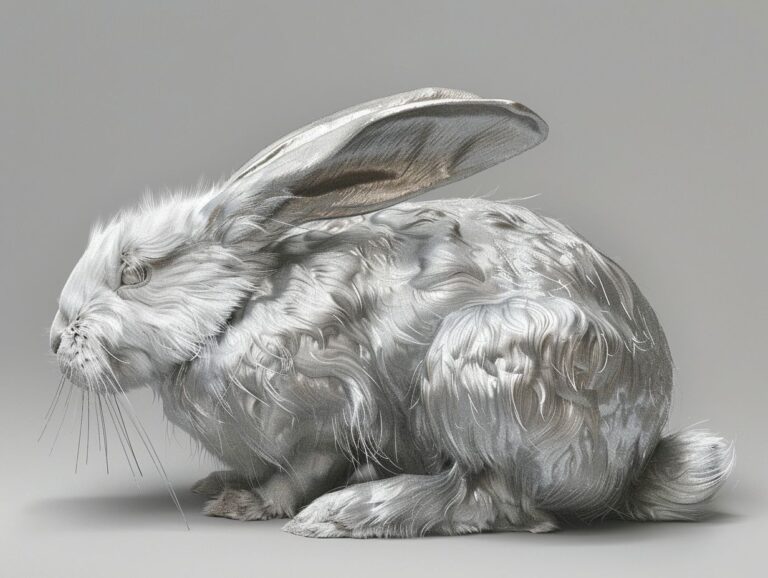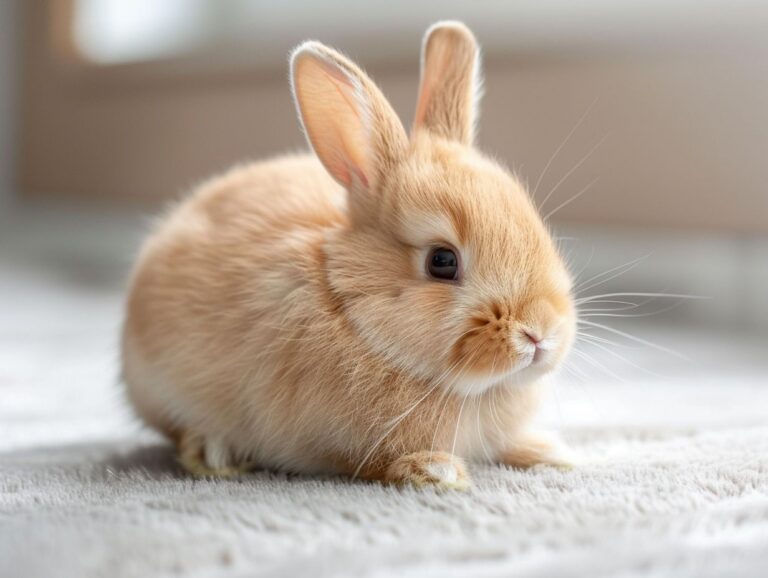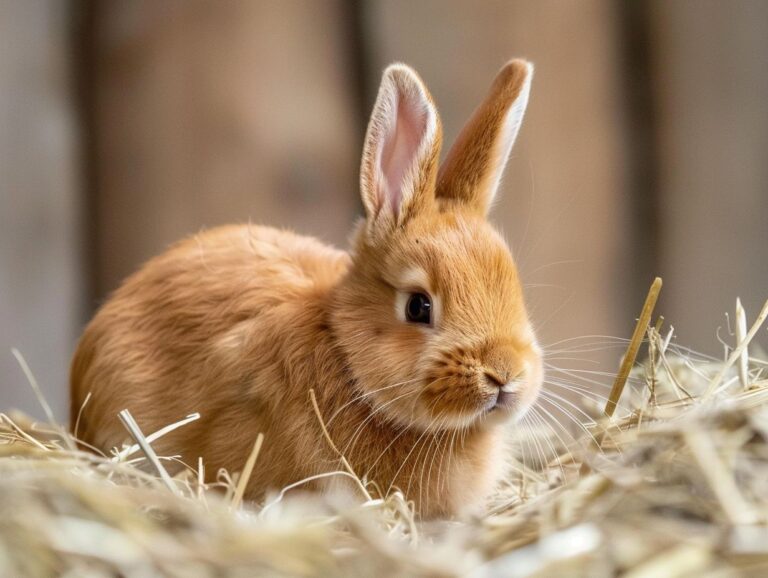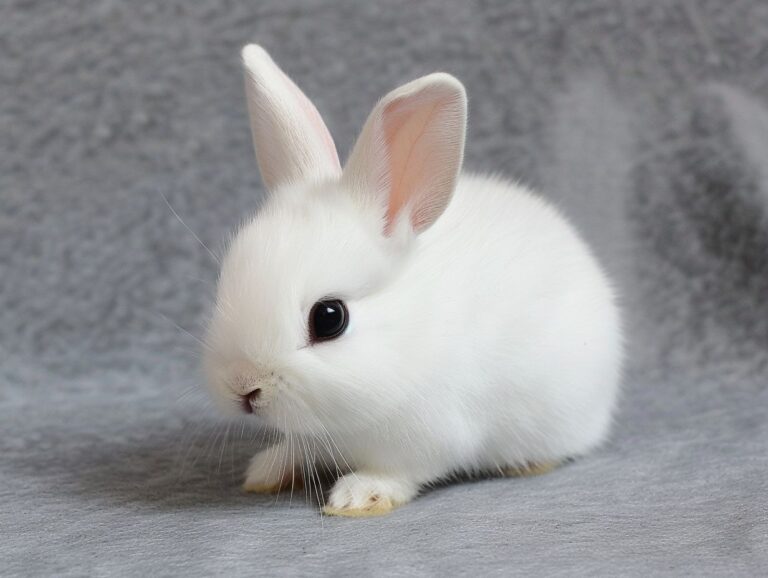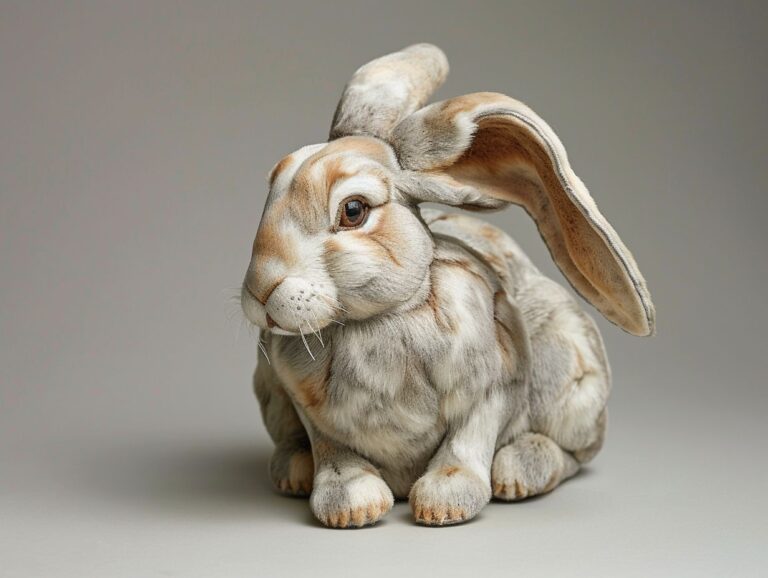New Zealand Rabbit Breed: Characteristics, Care, History, and Breeding Practices
Considering adding a New Zealand rabbit to your family? These unique and lovable creatures are known for their distinct characteristics, including their size, coat, and temperament.
We will explore the history of the New Zealand rabbit breed and discuss the basic care requirements needed to ensure their health and happiness. Delve into common health issues that may affect New Zealand rabbits and gain valuable insights on how to breed these adorable animals successfully.
Join us as we uncover the fascinating world of New Zealand rabbits!
Key Takeaways:
What is a New Zealand Rabbit?
The New Zealand rabbit is a popular breed known for its versatility in both meat and fur production. It is a recognized breed by the American Rabbit Breeders’ Association (ARBA) and is highly sought after for its superior qualities.
The New Zealand rabbit breed originated in America in the early 20th century, resulting from crossbreeding efforts to develop a rabbit suitable for both meat and fur production. The breed’s success can be attributed to its efficient conversion of feed to meat and its dense, lustrous fur.
The ARBA officially recognized the New Zealand rabbit in 1916, acknowledging its exceptional qualities that make it a popular choice among rabbit enthusiasts and commercial breeders worldwide. Known for their docile temperament and ease of handling, New Zealand rabbits are favored not only for their utility but also as pets due to their friendly nature.
What are the Characteristics of a New Zealand Rabbit?
New Zealand rabbits are known for their distinctive coat colors like white, red, black, and blue, showcasing their genetic diversity and potential for albinism. Their physiology enables them to adapt well to various environments and breeding conditions.
Size and Weight
New Zealand rabbits are known for their larger size and robust build, making them an ideal choice for those looking for a substantial rabbit breed. Their impressive weight and stature set them apart in the rabbit world.
These rabbits typically weigh between 9-11 pounds, with some even reaching up to 12 pounds. Their body length can range from 16 to 18 inches, showcasing their large physique. It’s not just their weight that stands out, but also their muscular build and strong bone structure, further emphasizing their robustness. These factors contribute to their reputation as one of the largest domestic rabbit breeds. Whether as pets or for meat production, the size and resilience of New Zealand rabbits make them a popular choice worldwide.
Coat and Color
The coat of a New Zealand rabbit is prized for its quality fur, which requires regular grooming to maintain its luster. Whether in white, red, black, or blue, their coat color adds to the beauty of these rabbits.
New Zealand rabbits have dense, plush fur that is soft to the touch, making them highly sought after in the fur industry. Their fur is known for being easy to maintain as well, but regular grooming is still essential to prevent matting and tangling. Grooming not only keeps their fur looking sleek and shiny but also helps in distributing natural oils, promoting healthy skin underneath. This regular care routine also allows for early detection of any potential skin issues or parasites. The grooming process helps to establish a bond between the owner and the rabbit, fostering trust and companionship.
Temperament
New Zealand rabbits are known for their gentle temperament, making them excellent pets for families seeking a docile companion. Understanding and training these rabbits can enhance their behavior and create a harmonious bond.
New Zealand rabbits are often characterized by their calm disposition and friendly demeanor, qualities that make them ideal for households looking for a pet that interacts well with both adults and children. Their gentle nature allows for easy handling and bonding opportunities, fostering a sense of trust and companionship within the family.
Regarding behavior, these rabbits are typically social animals, enjoying human interaction and companionship. Proper training plays a vital role in reinforcing positive behaviors, such as litter box training and responding to commands, which contribute to a more fulfilling relationship between the rabbit and its owners.
What is the History of New Zealand Rabbits?
The history of New Zealand rabbits traces back to the breeding efforts of William S. Preshaw in California, where the breed was developed for its meat and fur qualities. Preshaw’s work laid the foundation for the popularity of New Zealand rabbits in the rabbit breeding community.
William S. Preshaw, a dedicated breeder, carefully selected rabbits with desirable traits and characteristics to create the New Zealand breed, known for its large size and gentle temperament. His meticulous crossbreeding methods resulted in rabbits that excelled in both commercial production and showmanship, setting a new standard in the industry.
This breed’s significance in the rabbit breeding world is immense, as it quickly gained recognition for its exceptional growth rates and high-quality meat, making it a top choice for many breeders aiming to improve their stocks. The New Zealand rabbit stands as a testament to Preshaw’s vision and dedication to breeding excellence.
What are the Basic Care Requirements for New Zealand Rabbits?

Housing and Environment
New Zealand rabbits require a spacious and clean living environment that caters to their need for exercise and mental stimulation. Breeders and owners should pay close attention to creating a safe and enriching habitat for these rabbits.
These rabbits thrive in environments that allow them to hop, run, and explore. A minimum cage space of 12 square feet is recommended for a single rabbit, with additional space needed for each extra rabbit. Providing hiding spots, toys, and platforms for climbing can offer mental stimulation. To maintain cleanliness, spot clean the enclosure daily and conduct a thorough cleaning at least once a week.
Ensuring adequate ventilation and proper temperature regulation is crucial for their health. Regular vet check-ups and a balanced diet are essential elements of responsible rabbit ownership. Breeders play a significant role in promoting the well-being of these rabbits by selecting for traits that enhance their adaptability and resilience to various environmental conditions.
Diet and Nutrition
A balanced diet is crucial for New Zealand rabbits to prevent health issues like obesity. Providing a mix of fresh hay, vegetables, and pellets is essential for their nutrition and overall well-being.
Hay is the cornerstone of a rabbit’s diet, providing essential fiber for digestive health. Vegetables should include leafy greens like kale and spinach for vitamins and minerals. Learn more about the Polish rabbit breed including its characteristics, care, history, and breeding practices.
Obesity in rabbits can lead to serious health problems, so portion control is vital to maintain a healthy weight. Avoid overfeeding pellets, as they are calorie-dense. Monitoring water intake is also important; rabbits should always have access to fresh, clean water. By adhering to these diet and nutrition guidelines, rabbit owners can ensure their pets lead long and healthy lives.
Grooming and Hygiene
Regular grooming is necessary to maintain the coat health of New Zealand rabbits and prevent issues like parasites. Keeping their fur clean and free from mites ensures their well-being.
Establishing a proper grooming routine for your furry companion is crucial in ensuring their overall health and happiness. New Zealand rabbits require regular brushing to prevent matting and remove any dirt or debris that could attract parasites. It’s recommended to use a soft brush or comb specifically designed for rabbits to avoid injuring their sensitive skin. Checking their ears for signs of mites and other pests is essential to catch any issues early on. Implementing a parasite prevention regimen through vet-recommended products further safeguards your rabbit’s well-being and keeps them parasite-free.
Exercise and Enrichment
Engaging New Zealand rabbits in regular exercise and providing enrichment through toys and interactions with family members promotes their physical and mental well-being. Creating a stimulating environment is essential for their happiness.
Exercise is vital for the health of New Zealand rabbits, helping to prevent obesity and promote agility. By offering a variety of toys such as tunnels, chew toys, and puzzle feeders, owners can keep their rabbits mentally stimulated and prevent boredom. Family interactions provide socialization opportunities, which are crucial for the emotional well-being of these sociable pets. Engaging activities foster a strong bond between rabbits and their human companions, leading to a harmonious and enriching relationship.
What are the Common Health Issues for New Zealand Rabbits?
New Zealand rabbits are prone to health issues like gastrointestinal stasis, dental problems, and parasite infestations. Understanding these common conditions is crucial for maintaining the health of these beloved pets.
Gastrointestinal Stasis
Gastrointestinal stasis can be a serious condition in New Zealand rabbits, often linked to underlying issues like Encephalazoon cuniculi infections or sore hocks. Recognizing the symptoms early is vital for prompt treatment.
It’s important to understand that gastrointestinal stasis occurs when a rabbit’s digestive system slows down or stops moving altogether. This can lead to a build-up of gas and food in the intestines, causing discomfort and potential complications. Common causes of this condition include a diet lacking in fiber, stress, dehydration, or underlying health problems like Encephalazoon cuniculi infections. Symptoms to watch for include reduced appetite, lethargy, abdominal bloating, and reduced or no fecal output.
Dental Problems

Dental problems are common in New Zealand rabbits due to their diet and dental anatomy. Ensuring appropriate nutrition and providing suitable chew toys can help prevent dental issues and maintain oral health.
Rabbits have continuously growing teeth that need constant wear to prevent overgrowth, leading to issues like malocclusion. A diet rich in fiber, such as hay, helps promote proper tooth wear. Lack of hay and excessive consumption of sugary treats can contribute to dental problems. Learn more about the Himalayan rabbit breed and their unique characteristics.
Regular veterinary check-ups are crucial to detect dental issues early. Offering tough chew toys can aid in wearing down their teeth naturally. Without proper care, dental problems can cause pain, eating difficulties, and overall health decline in rabbits.
Respiratory Infections
Respiratory infections, including issues like ear mites, can affect the health of New Zealand rabbits. Recognizing the signs of respiratory distress and seeking prompt veterinary care are essential for managing such conditions.
Ear mites, a common parasite in rabbits, can lead to respiratory problems if left untreated. Symptoms may include excessive scratching around the ears, head shaking, and crusty debris in the ear canals. To learn more about the Rhinelander rabbit breed, its characteristics, care, history, and breeding practices, click here.
Respiratory infections in rabbits can manifest as nasal discharge, sneezing, and labored breathing. These conditions can rapidly worsen, posing a significant risk to the Alaskan rabbit breed‘s health.
Early intervention through proper diagnosis by a knowledgeable veterinarian and timely treatment with suitable medications is crucial to prevent complications and ensure a speedy recovery.
How to Breed New Zealand Rabbits?
Breeding New Zealand rabbits involves careful selection of breeding stock, proper mating procedures, attentive care during pregnancy, and appropriate management of newborn kits. Understanding the breeding process is key to successful reproduction.
When choosing breeding stock, ensure that the doe and buck have good health, lineage, and conform to breed standards. It’s essential to assess their temperament and genetic background to prevent any undesirable traits. Utilize methods like artificial insemination or natural mating, depending on your resources and expertise to optimize breeding outcomes.
Once the doe is pregnant, provide a suitable environment with adequate nutrition and nesting materials. After birth, closely monitor the kits for any health issues and maintain a warm, clean nest for their development.
Choosing Breeding Stock
Selecting high-quality breeding stock is crucial for maintaining the breed standards of New Zealand rabbits. Working with reputable organizations like the American Rabbit Breeders’ Association (ARBA) and the British Rabbit Club can aid in identifying suitable rabbits for breeding.
These organizations set specific criteria and guidelines to ensure that only rabbits with excellent genetic traits are chosen for breeding. The ARBA, for instance, focuses on promoting and standardizing rabbit breeds, including New Zealand rabbits, through shows and competitions. By participating in these events, breeders can showcase their rabbits to experts and receive valuable feedback on their quality and conformation.
The British Rabbit Club also plays a significant role in upholding the breed standards of New Zealand rabbits by providing breed-specific information, networking opportunities, and access to educational resources for breeders. Their dedication to preserving the heritage and characteristics of different rabbit breeds, including the New Zealand, greatly benefits breeders seeking to improve their stock.
Mating and Pregnancy
The mating and pregnancy process in New Zealand rabbits requires careful monitoring and support to ensure successful reproduction. Understanding the stages of mating, gestation, and birthing is essential for breeders.
New Zealand rabbits are known for their reproductive efficiency, with a gestation period lasting around 31 days. During mating, the female rabbit may show receptiveness for a short period of time, indicating her readiness to breed. The male rabbit, also known as a buck, will display typical mating behaviors such as mounting and chasing the female.
Once mating is successful, it is crucial to provide the pregnant rabbit with a nutritious diet rich in protein and essential nutrients to support the developing fetuses. Adequate nesting materials should be provided in the cage, as the pregnant rabbit will start preparing a nest a few days before giving birth.
Caring for Newborn Kits
Caring for newborn kits involves providing a warm and safe environment, ensuring proper nutrition, and monitoring their growth milestones. The weaning process requires attention to their dietary needs and gradual independence.
Ensuring a warm nest for the kits is essential to maintain their body temperature, as they are unable to regulate it themselves initially. Additionally, nutrition plays a crucial role in their development, starting with the mother’s milk rich in antibodies. As they grow, introducing high-quality pellets and fresh hay becomes important to meet their increasing energy needs. Monitoring their growth through weekly weight checks and observing their activity levels helps in detecting any issues early.
Weaning and Separation
The weaning and separation of New Zealand rabbit kits from their mother require a gradual transition to independent feeding and living. Proper training and handling during this phase can ensure the well-being of the young rabbits.
As New Zealand rabbit kits grow, they start becoming more independent and less reliant on their mother’s milk. To facilitate this natural progression, it is essential to gradually introduce solid foods to their diet, starting at around 3-4 weeks of age. Separation from the mother should also be done gradually, allowing the kits to adjust to their new environment and routines.
Training the young rabbits for independence involves providing them with safe and appropriate living conditions, as well as teaching them essential behaviors such as using feeding and watering equipment. Gentle handling and socialization play a crucial role in ensuring that the Netherland dwarf rabbit breed kits grow up to be well-adjusted and confident rabbits.
Frequently Asked Questions
What are the characteristics of the New Zealand rabbit breed?
The New Zealand rabbit breed is known for being large, muscular, and docile. They have a distinctive white coat and come in four different color varieties – white, red, black, and broken.
How should I care for a New Zealand rabbit?
New Zealand rabbits require a diet rich in hay, fresh vegetables, and high-quality rabbit pellets. They also need plenty of space to run and exercise, as well as regular grooming to maintain their thick coats.
What is the history of the New Zealand rabbit breed?
The New Zealand rabbit breed originated in the early 20th century in the United States, using rabbits imported from New Zealand. They were primarily bred for their meat and fur, but have since become popular as pets due to their gentle nature.
What are some important considerations for breeding New Zealand rabbits?
When breeding New Zealand rabbits, it is important to have a clean and spacious environment for the mother and kits. It is also crucial to select healthy and genetically diverse breeding pairs to avoid health issues in the offspring.
Are there any health concerns specific to the New Zealand rabbit breed?
New Zealand rabbits are generally a hardy and healthy breed, but they can be prone to certain health issues such as ear mites, respiratory infections, and obesity. Regular check-ups with a veterinarian can help prevent and treat these issues.
What are some tips for successfully showing New Zealand rabbits?
To successfully show a New Zealand rabbit, it is important to select a well-bred and well-groomed rabbit that meets the breed standard. It is also important to handle and socialize the rabbit from a young age to ensure they are calm and comfortable during the show.

